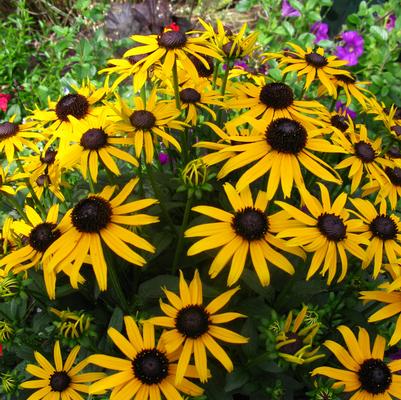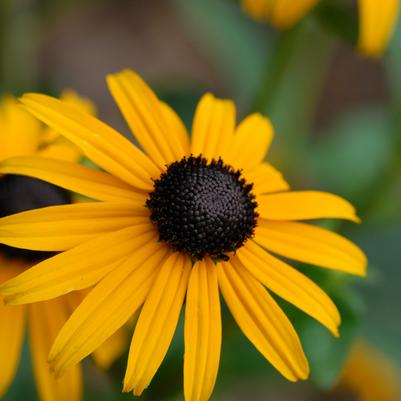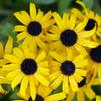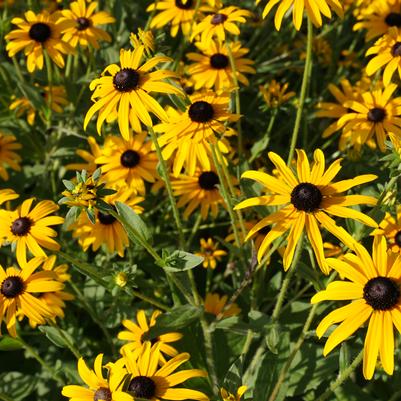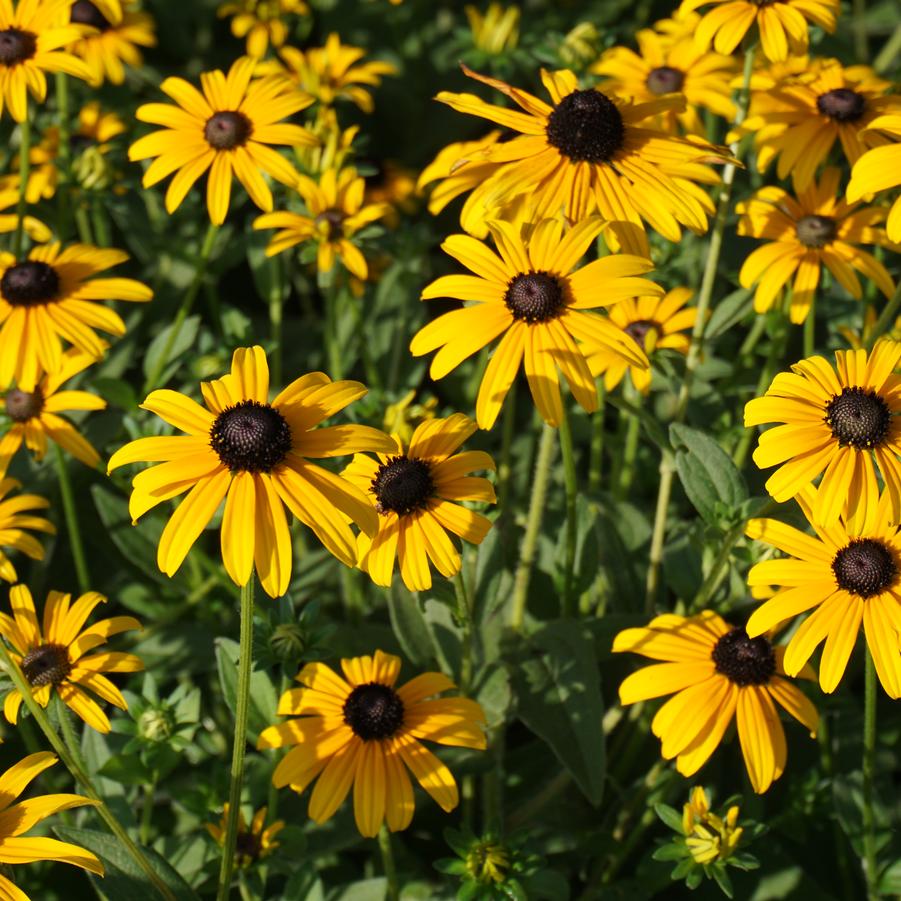
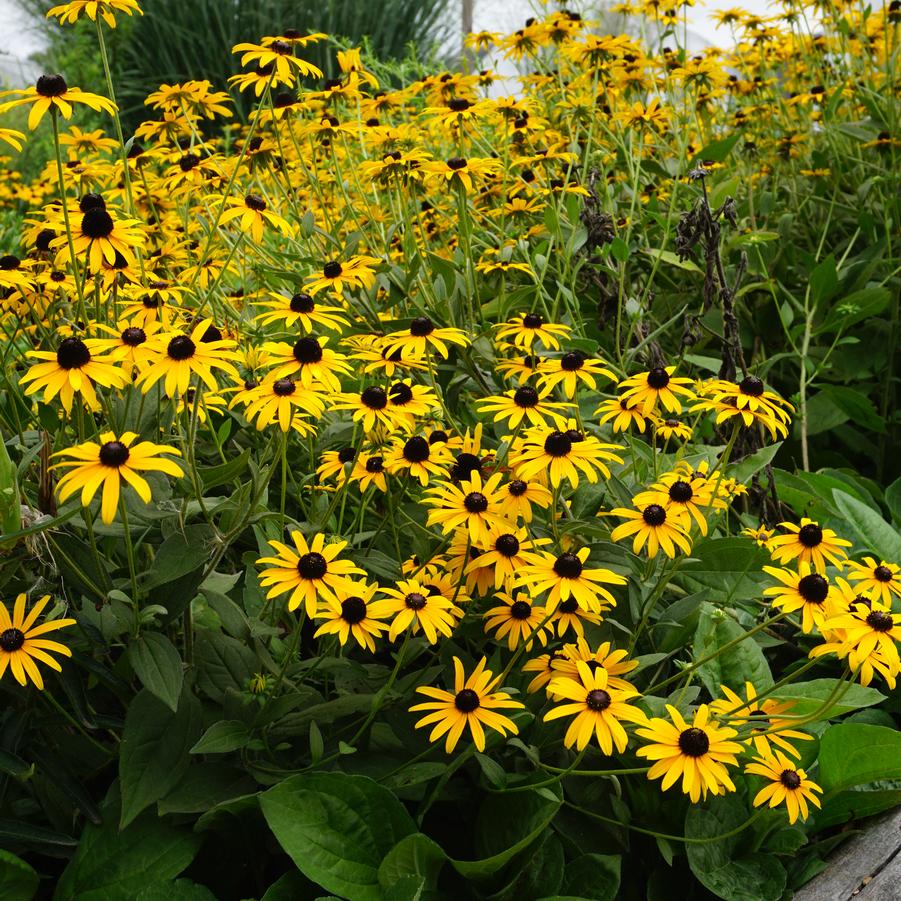
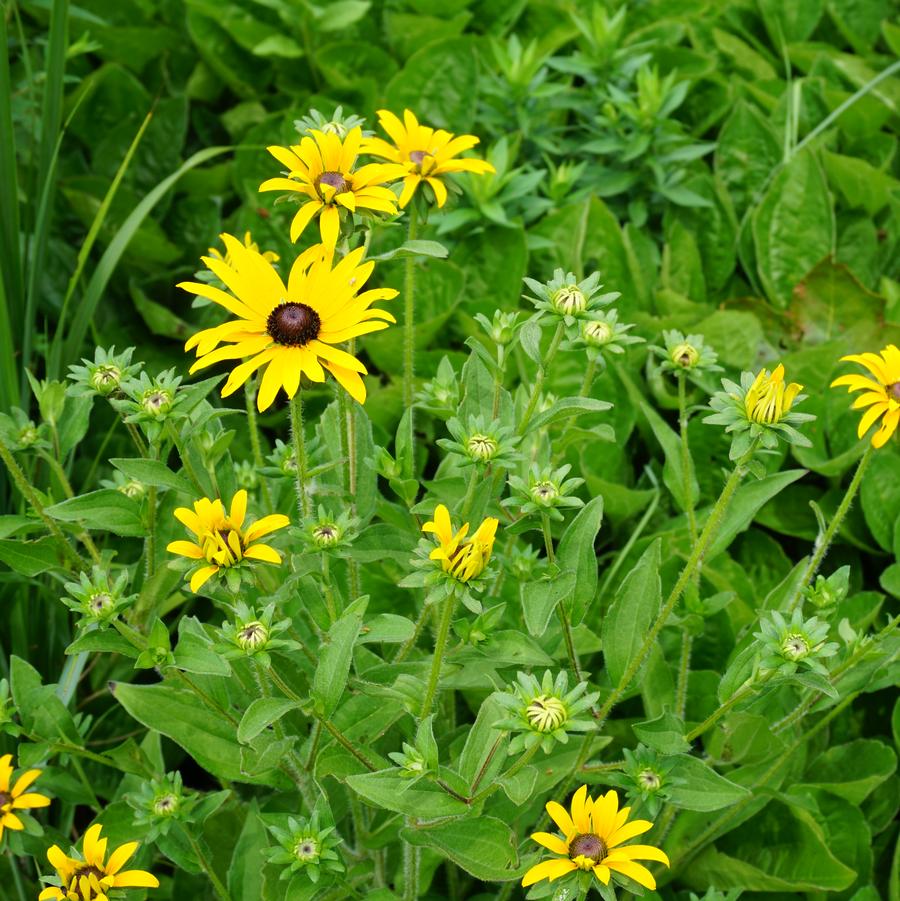



Plant Calculator
Enter the approximate length and width of the area you will be planting and click 'Calculate' to determine how many Rudbeckia fulgida var. deamii you will need.
Correct and successful spacing is complex and depends on project conditions. We encourage you to call us at 877-ECO-PLUG for project specific recommendations and further assistance.
Rudbeckia fulgida var. deamii
Deam's coneflower
- Category: Perennial, Native
- Hardiness Zone: 4-9
- Height: 2-3 Feet
- Spread: 1-2 Feet
- Spacing: 12-18 Inches
- Bloom Color: Yellow
While there may be a bounty of black-eyed susan on the market, what makes Rudbeckia fulgida var. deamii a dream is its ability to wrap strength, beauty, disease and pest resistance all into one neat package. This variety won the prestigious Award of Garden Merit from the Royal Horticultural Society in 1993 and if you grow it, you'll soon understand why!
Click here to download technical information for growers:
Wetland Indicator Status
| • | Falcutative (FAC) |
Plug Type
| • | Horticultural Plug |
Propagation Type
| • | Open pollinated |
Additional Information about Rudbeckia fulgida var. deamii
While there may be a bounty of black-eyed susan on the market, what makes Rudbeckia fulgida var. deamii a dream is its ability to wrap strength, beauty, disease and pest resistance all into one neat package. Rudbeckia fulgida var. deamii is a fantastic pollinator plant with large, orangish yellow daisy flowers with slender petals and raised dark brown center cones. Growing up to 3' tall and 2' across, this black-eyed susan separates itself from its commonly found cousin, R. fulgida var fulgida by its clumping habit and hirsute foliage. It freely self-sows when the seed heads aren't picked clean by goldfinches and is a great and easy-going plant for the garden. This variety won the prestigious Award of Garden Merit from the Royal Horticultural Society in 1993 and if you grow it, you'll soon understand why!
Rudbeckia fulgida grows best in dry to medium soil moisture in rich to average soil organic levels in full sun. Traditionally, this widespread native perennial is found from New Jersey to Indiana to Florida to Texas, preferring open woods, meadows, and pastures to roam. It is a trouble-free plant and the dense basal foliage provides an impenetrable herbaceous layer to suppress weeds. When placed in a good location, black-eyed Susan happily self-sows or spreads by creeping rhizomes. Variety deamii naturally can be found in Illinois, Indiana, and Ohio. It is adaptable to a wide variety of soil conditions but is most liked for its ability to tolerate hot, humid summers and some drought. For best display, deadhead flowers to prolong blooming season. Generally, this Rudbeckia is disease and pest resistant and less likely to get powdery mildew than other Rudbeckia species.
Not only is Rudbeckia beautiful en masse, it makes a wonderful and long lasting cut flower (which is a great way to prolong the bloom by deadheading). The coneflowers provide seeds in the winter for birds and nectar for butterflies in the summer. This plant is striking and versatile, outstanding in mass plantings as well as perennial borders, meadows and prairie gardens.
Growing & Maintenance Tips for Rudbeckia fulgida var. deamii
Prefers full sun to part sun and can tolerate a wide range of soil conditions from sand to loam to clay. Prefers moderately fertile soil with average soil moisture but can take periods of drought once established. Generally, disease and pest resistant and less likely to get powdery mildew than other Rudbeckia species.

